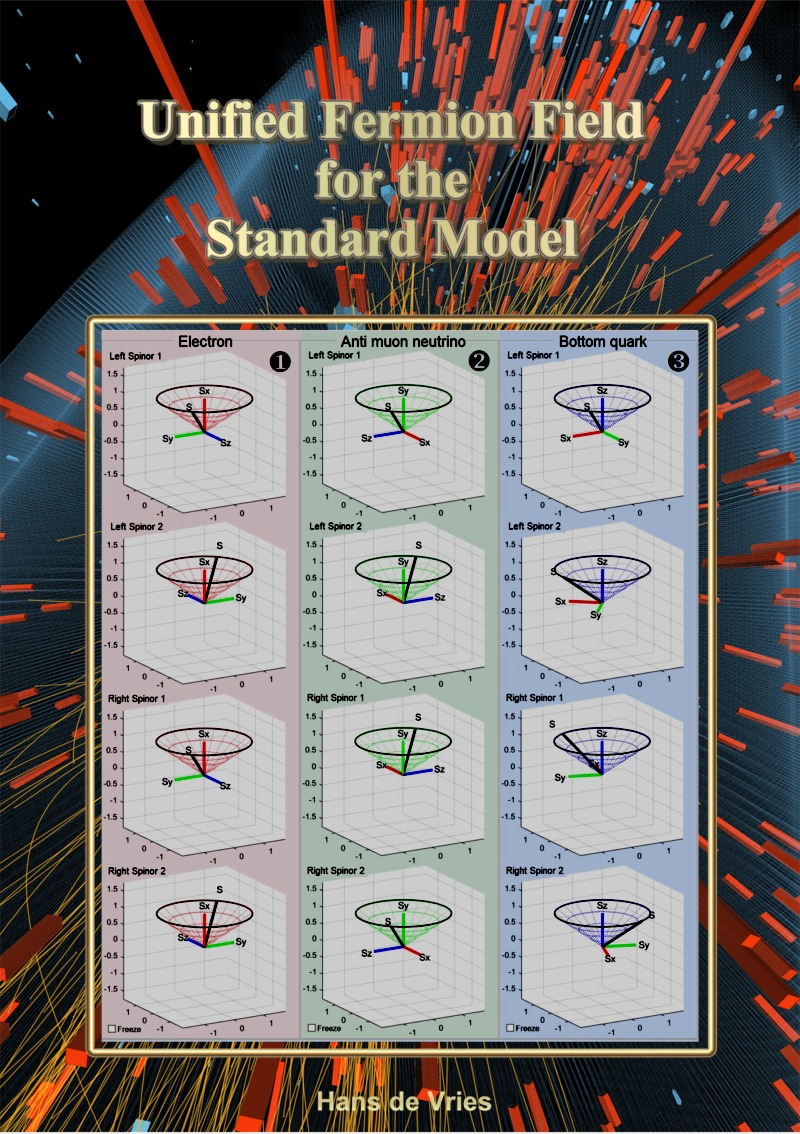|

UNIFIED FERMION FIELD FOR THE STANDARD MODEL
A single, very simple, Unified Fermion Lagrangian, produces the many separated,
particle dependent, pieces of the Electroweak Fermion Lagrangian.
All the Standard Model fermions, three generations of leptons and quarks, are found to be different excitations of a single unified field, as the eigenvectors of a single generator function with the charge as only variable. The field's content determines the type of fermion and its characteristics.
Understanding
Relativistic Quantum Field Theory
Hans de Vries
Part
I Relativistic
foundations of light and matter Fields
Chapter 1:
Elementary solutions of the classical wave
equation
Chapter 2:
Lorentz
contraction from the classical wave
equation
Chapter
3: Time dilation from
the
classical wave equation
Chapter
4:
Non-simultaneity from the
classical wave equation
Part
II Advanced
treatment of the EM field
Chapter 5:
Relativistic formulation of
the electromagnetic field
Chapter 6:
The Chern-Simons EM spin
and axial current density
Chapter 7:
The EM stress energy tensor
and spin tensor
Chapter 8:
Advanced EM treatment of
Spin 1/2 fermions
Part
III The
relativistic matter wave equations
Chapter
9:
Relativistic
matter waves from Klein Gordon's
equation
Chapter
10:
Operators of the scalar Klein
Gordon field
Chapter
11:
EM Lorentz force derived from
Klein Gordon's equation
Chapter 12:
Klein Gordon transition currents and
virtual photons
Chapter
13:
Propagators of the real Klein
Gordon field
Chapter 14:
Propagators of the complex Klein Gordon
field
Chapter 15:
The self propagator of the Klein Gordon
field
Chapter 16:
The Poincare group
and relativistic wave functions
Chapter
17:
The Dirac
Equation
Chapter
18:
Transformations of the
bilinear fields of the Dirac
field
Chapter
19: Gordon
decomposition of the vector/axial
currents
Chapter
20:
Operators
and Observables of the Dirac field
Chapter 21:
The EM
interactions with the Dirac field
Chapter
22: The Hamiltonian and
Lagrangian densities
Part IV
Foundations of Quantum
Electro Dynamics
Chapter 23:
Scattering and momentum
conservation
Chapter 24:
Decay rates
and Cross sections
Chapter 25: Interference currents
from transitions
Chapter 26:
Propagation from the interaction term
Chapter 27:
Feynman
rules and diagrams of QED
Chapter 28:
Full Gordon decomposition of all bilinears
Chapter 29:
Higher
order Feynman diagrams
Chapter 30:
Path integral methods
Part V Non
Abelian gauge theories
Chapter 31:
The Electroweak theory
Chapter 32:
The Electroweak interactions with
quarks
Chapter 33:
Quantum Chromo Dynamics
|
|